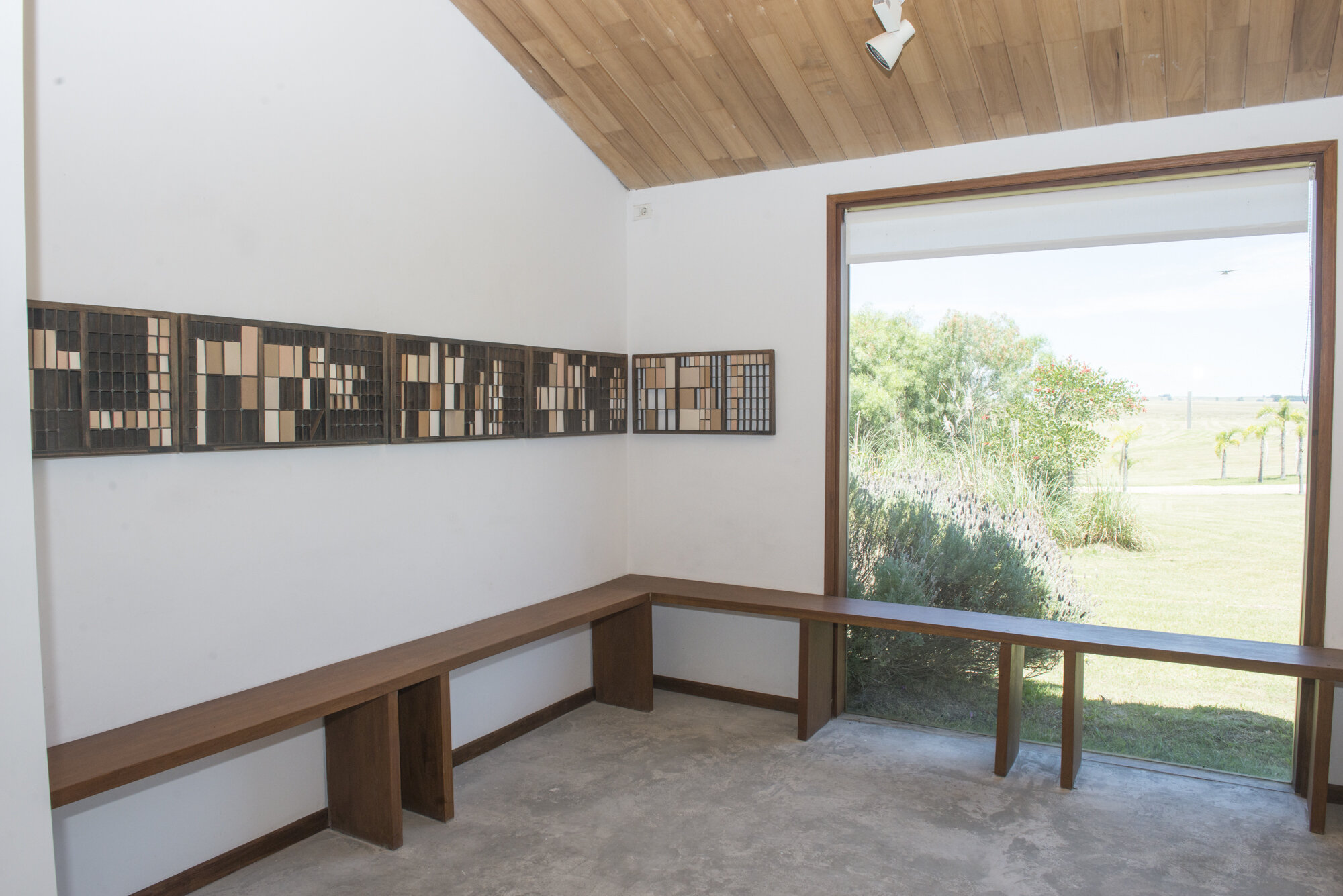Verónica Vázquez: Rhythm by Form and its Absence
December 29th, 2019 — April 12th, 2020







We are pleased to present the third solo show of Verónica Vázquez. The exhibition will introduce new works by the artist that highlight the angled walls and broad windows of our gallery in Tierra Garzón to further entangle the rhythms of sculpture and space.
The Piero Atchugarry Gallery is pleased to introduce the third solo show of Verónica Vázquez at the Tierra Garzón location. Opening Sunday, December 29th, the exhibition will feature new works by the artist. As its title suggests, Rhythm by Form and its Absence presents Vázquez’s signature egalitarian treatment of the sculptures she creates and the space that surrounds them.
The repeating lines and abstract forms in Vázquez’s work produce a distinct rhythm within each piece. Presented together in a shared space, the rhythms of the respective works begin to overlap, creating a layered percussion. A departure from the studied repetitions of Post War artists like Agnes Martin and Robert Ryman, Vázquez’s rhythm is interceded with syncopation, breaks, and improvisations.
Vázquez privileges negative space so that it may be appreciated as an equal to her sculptures. Just as rhythm cannot exist without silence to accent the sound that follows, Vázquez’s forms rely on negative space. The rhythm of Vázquez’s sculptures is diffused throughout the gallery itself: every square inch of empty space becomes the rest between the next beat.
The gallery space at Tierra Garzón join’s the diverse ensemble of rhythms by adding a layer of unconventional pace. While most galleries adhere to the “white cube” format, the gallery at Tierra Garzón stands out for its unique architecture. A renovated stable, the building challenges every artist to see the architecture as a collaborator, rather than a pedestal. Vázquez utilizes the angled walls and broad windows to further entangle the rhythms of sculpture and space. This tactic is amplified by each viewer – circulating the space at individual tempos, the viewers both bear witness and contribute to the orchestral qualities of Vázquez’s sculptures and exhibition design.
Vázquez expertly produces grounded contradictions and perfect impossibilities. Just as a silent din roars throughout this exhibition, thin air is remarkably visible. The negative space inside of her sculptures participates equally in forming the whole. What becomes simultaneously less and more clear, is the distinction between the negative space “contained” by the sculpture, and the negative space that surrounds it. The prescribed forms of Vázquez’s sculptures melt into the empty spaces around them, suspended in an infinite pool of matter.
In Rhythm by Form and its Absence, Verónica Vázquez democratizes all states of matter. Thin air and solid metal are credited equally in her sculptures, just as the idea of sight and sound are as tangible as the actual act of hearing and seeing. Vázquez grants her viewers the privilege of experiencing absence as concretely as she can herself, and ultimately, awards them as much agency in contributing to her rhythm ensemble.


